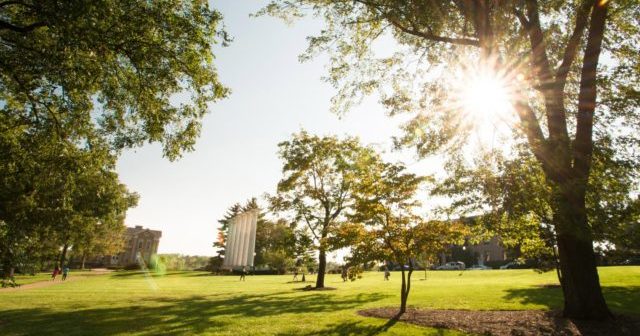Read about The Efficiency Fund initiative below, and cast your vote today.
The Efficiency Fund is a $15 increase in tuition per student per semester that would go directly into a pool a funds aimed at making the campus more economically and environmentally efficient. This fee will fund different projects around campus, such as energy-efficient light bulbs and light sensors. A poll on Moodle allows students to vote in favor or in opposition of the fund.
- Log in to http://moodle2.westminster-mo.edu/
- Click on the “Student Government Association” link in the right side bar.
- Click on the “Efficiency Fund Referendum” link.
- Read up on the fund, and what the next steps are on the fund.
- Vote. (Voting closes Jan. 25.)
Efficiency Fund Proposal
EcoHouse, in coordination with The Green Council, has proposed a $15 fee increase per student per semester to create an Efficiency Fund. Based on enrollment projections, the Efficiency Fund would generate $30,000 per year to fund projects that make the campus more economically and environmentally sustainable. The funds would be held in a line item within the Plant Operations budget. A collaborative body of students, faculty, staff, the Director of Plant Operations, and the President of the College, the Green Council will be responsible for investing the funds in projects that reduce utility costs and increase efficiency.
Return on Investment: Do expected savings outweigh the costs?
The Director of Plant Operations calculated the start-up costs for various maintenance projects. Working with the Green Council, they select projects with the greatest efficiency and long-term profitability. This vetting process ensures the money saved over 3-5 years outweighs the initial costs for the project. One example of a project would be changing the light fixtures in Hunter Activity Center to a lower wattage. For an initial investment of $7,310.00, the 464 watt light fixtures can be replaced with 199 watt T8 fixtures. This will save $2,343 per year in energy costs, making the return on the investment 3.12 years.
What happens with the money we save?
At the end of each fiscal year, the $2,343 in savings remaining in the Plant Ops electrical budget would be transferred to the Efficiency Fund line item. Incorporating savings into a revolving fund allows the Green Council to fund projects with higher start-up costs. Reclaiming heat from rooftop exhausts in Coulter has an initial investment of $85,000 -$102,000, resulting in a $38,000-$45,000 annual savings in heating expenses. This means we would break even on the project after 2 years of use.
Proposed projects
Students, faculty, and staff are welcome to recommend projects to the Green Council. Additional projects the Green Council has researched include the following:
| Project | Initial Investment | Projected Savings after 5 years |
| Occupancy sensors for bathroom lighting | $963.50 | $3,100 |
| Changing 100 watt bulbs in exterior lamp posts to 31 watt LED | $5,425.00 | $6,962.00 |
What happens next?
January 12-25, 2015: Students have the opportunity to vote on the referendum on Moodle by accessing the Student Government Association page.
January 27, 2015: The SGA Senate will discuss the results and vote whether or not to propose the $15 fee increase to the Board of Trustees.
February 5-7, 2015: The Board of Trustees Financial Affairs Committee will review the proposal and determine whether or not to include the Efficiency Fund Fee in the fees for the 2015-2016 academic year.
This is the editorial account for Westminster College news team. Please feel free to get in touch if you have any questions or comments.






